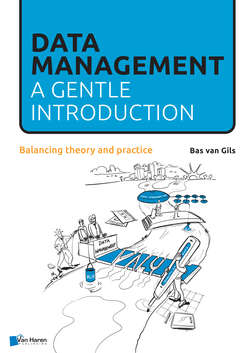Читать книгу Data Management: a gentle introduction - Bas van Gils - Страница 16
На сайте Литреса книга снята с продажи.
■ 4.2 DM AND BUSINESS PROCESS MANAGEMENT
ОглавлениеBusiness processes form the value creation engine of the organization. Many definitions have been proposed in literature and common characteristics of these definitions are: (1) processes consist of a series of steps, (2) processes are executed by (human/ computer/ machine) actors, (3) processes are executed to achieve a goal, (4) processes may or may not be designed (i.e., some processes are ad-hoc, others are executed along the lines of a pre-design “script”), and (5) processes may or may not be described in a process model. Business process management originated in and became popular in the 1980s and 1990s and encompasses techniques such as Lean and Six Sigma. An abundance of literature is available on (successful) business process management (e.g. [Wes07, SqE08, Kir09]).
The premise behind business process management (BPM) is that the activities of the organization should be coordinated in such a way that strategic outcomes are achieved and that resources (people, time, money, materials) are used as effectively as possible in achieving those outcomes. Processes transform inputs (e.g. a frame, wheels, saddle, etc.) to outputs (e.g. a bike). Increasingly these inputs and outputs are also “informational”: data about which parts are used, who did the assembly of a (physical) product and when, are common examples. For many organizations the inputs are solely informational in nature: for example, banks and insurance companies do not have a physical/ tangible product that is created. Instead, they offer services to their customers, and data (about customers, products, financial positions, market conditions, etc.) are the “fuel” for the processes.
This is also where the worlds of DM and BPM meet. From a BPM perspective you could argue that the inputs and outputs of processes are data, and since these are key to the successful execution of these processes, they should be managed accordingly. This means that we want to know what data is used where, which systems we can find it in, what the quality is, etc. Turning this argument around, you could also say that data is the key asset of the organization (chapter 2). Processes manipulate the data, and should be managed as such. This means that we want to know which processes manipulate the data, what the intended use of data is, who is responsible for these processes, etc.
It is safe to conclude that, in practice, both capabilities are important and tightly linked.
